After learning that her family’s ‘forever home’ could be bulldozed to make way for a re-routed and upgraded link between the Huon and Derwent Valleys, via Jefferys Track, Jenny Cambers-Smith wrote to the General Manager of the Huon Valley Council this week – and she did not pull her punches.
“Believe me, our family and many others like us will be fighting to the bitter end against this proposal, not just for us, but for the wildlife and forests above us that we fought so hard for over four years to get protected under the Forests Peace Deal in 2013.”
“We expect a full and uncompromising apology and compensation for our grief, stress and loss of income when this is deemed to be flawed and uneconomic – as it surely will.”
Cambers-Smith is one of the numerous families in the Huon and Derwent Valleys who are deeply troubled by the current Deloitte feasibility studies investigating the option of upgrading Jefferys Track.
The current proposal being explored by the respective councils is to provide cars and trucks up to 12m long (20 tonne) with an alternative route between the two valleys, rather than travelling via Hobart or across the already existing Plenty Link Road in Lonnavale and Plenty.
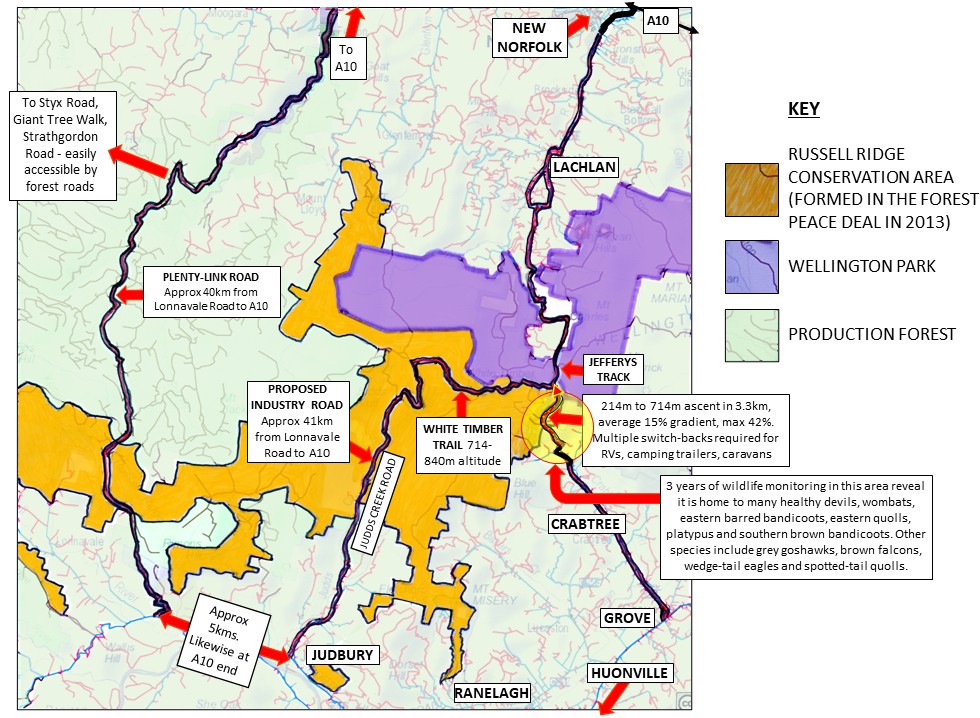
Map detail provided by Jenny Cambers-Smith who has travelled all these roads for years
“And if it turns out that this feasibility money is just being spent because you’ve got it and might as well spend it (knowing full well that there is no budget for building or maintaining this monstrous project), then that is a ‘reckless dereliction’ of duty towards the community you are meant to be supporting, not dividing,” wrote Cambers-Smith in her well informed and detailed exposition against this study.
When this feasibility study was first announced in a joint Huon Valley and the Derwent Valley Council media release in July 2020, Cambers-Smith was one of only five landholders who received a letter to inform them they could be affected by the study’s outcomes. This is despite almost all landholders fronting Crabtree and Lachlan Road being likely to lose land and amenity to road-widening and straightening, should the project go ahead.
This week Cambers-Smith and her family met with consultants from Deloitte Access Economics who, along with GHD, have been engaged to undertake this study working from a state government grant of $147,000 which was provided to the HVC for the feasibility study.
The consultants advised three routes are being considered for Mitchells Road in Crabtree, which is at the bottom of Jefferys Track.
“Two of these options wipe out our house and most of our land,” said Cambers-Smith.
“One route would cut our land in half from top to bottom plus that of our nearest neighbours. The last one has less deviation from the current route, but is apparently the least favoured.”
Huon Valley Council Mayor Enders advised 26 August 2020:
“At this stage, the feasibility study has shown that a light-vehicle route for commuters and tourists, with some realignment, could be constructed from Crabtree to Lachlan. This route would run 35km from Huonville to New Norfolk, with travel time for a car of about 34 minutes at best, depending on traffic and conditions.”
‘At best’ appears to assume an average travel time of over 60km/hr despite steep gradients and multiple intersections; which begs the question of what speeds limits are to be applied to these sleepy rural communities.
“The cost to construct this route, including upgrades to connecting roads in both Valleys, would be in the area of $98 million,” said Enders.
However, these costs do not include any acquisitions of land or property, nor do they appear to include necessary upgrades to the Grove and Huon Highway intersection, and the junction between Crabtree and Mountain River Roads which would most likely result in a doubling of these initial estimates.
Enders added: “A heavy vehicle route was not possible from Crabtree, but the study shows that this could be possible through a different route joining up with White Timber Trail. [which would then join up from Jefferys to Judds Creek Road]. The cost to construct this road, including upgrades to connecting roads in both Valleys, would be in the area of $276.7 million.”
These initial indications and assessments are in response to the scope of the brief provided by Council to Deloitte and GHD, which is to include relevant tourism and industry views to include aquaculture, agriculture (in particular, fruit and hops growers), forestry, viniculture, and manufacturing.
Industrial stakeholders identified in the brief include Reid Fruits, Hansen Orchards, Tassal, Huon Aquaculture, Sustainable Timbers Tasmania, Willie Smiths, and Norske Skog (as landowners also).
Back in April 2017 the then Commissioner of the HVC, Adriana Taylor, held a series of meetings with industry which appeared to lead to this study being announced as a pre-election promise. It is regarded by many as a ploy to move the focus away from the already well-established and perfectly viable option of using the Plenty Link Road (PLR) which stretches from Lonnavale through to Plenty.
Taylor is a member of the Forest Products Association and is a well-known supporter of forestry in Tasmania.
Ever since the PLR was established in 2000 with funds from the Regional Forest Agreement, a bilateral agreement between the Tasmanian and Australian governments, and Forestry Tasmania (now STT), have wanted exclusive access to this road. This suggested exclusivity that has become a fallacy, because the PLR is not currently an exclusive STT road.
Former Forestry chief, Evan Rolley, was commissioned to provide the state government with a solution to transporting forestry products from the south of the state to Bell Bay for wood chip processing.
In October 2018 Rolley delivered a report titled “Strategic Advice to inform the Department of State Growth on options to maximise the value-of forest resource opportunities from the Southern Tasmania forest region”.
The report stated:
“The Plenty Link Road upgrade needs to be considered as essentially a ‘private freight route’ . The link road would remove most of the log transport tasks from Macquarie and Davey Streets in Hobart with significant social and environmental benefits.”
Rolley estimated the cost to upgrade to a private road would cost $38m.
“Upgrading the Plenty Link Road to the National Highway standard for general public transport uses, beyond the capital required for the proposed freight task, has a higher capex (estimated in 2015 at $48 million) and would still mix heavy freight and public transport over very challenging terrain,” he advised.
“The privately-owned freight route components of the Plenty Link Road maintain the diesel rebate advantage for primary industry users.”
Forestry removed the various boom gates on this “well-kept secret” road several years ago. It is currently very accessible with a standard 4×2 vehicle and is a 40-minute journey in a sedan car.
When Commissioner Taylor was asked back in 2017 why this road is not being promoted as a tourist road, she claimed it was too far out of Huonville and that “tourists and industry may just as well travel via Hobart.”
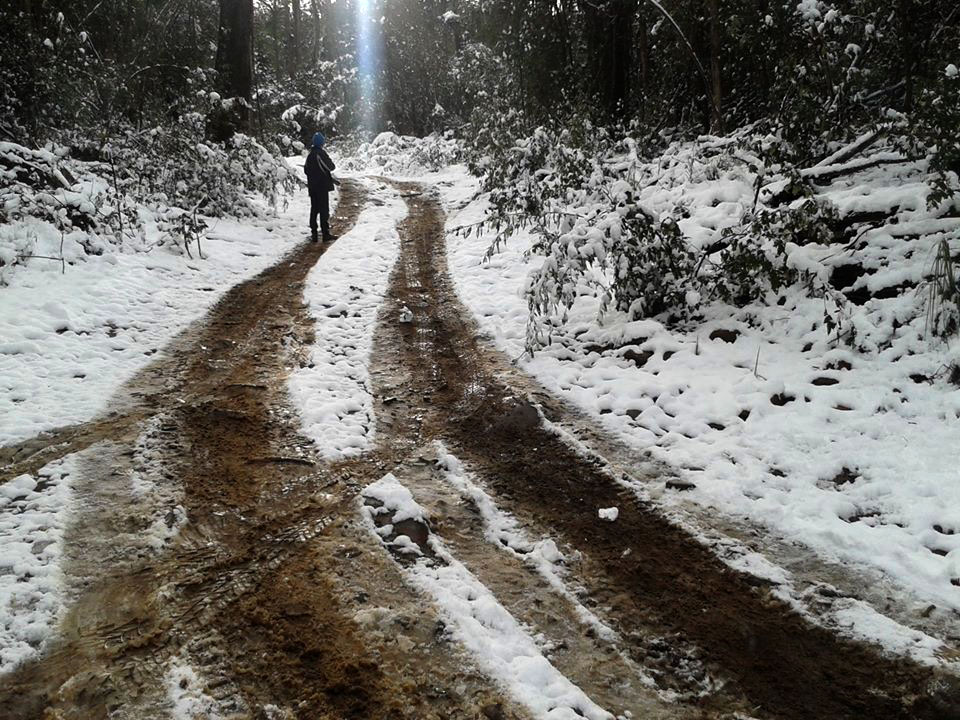
Altitude: Top of Jefferys Track is 714m, top of White Timber Trail (where it meets Judds Creeks Road) is 840m. Vinces Saddle is 376m. Therefore, snow, ice and flooding would be constant issues through winter
In the latest joint media release, Derwent Valley Council Mayor Shaw says:
“The concept of linking the Huon and Derwent Valley has been discussed at length for several years. Recently, since the completion of the Plenty Link Road Feasibility Study in 2015 (Jacobs Report), and that particular route being deemed unviable, questions remained on whether Jefferys Track is a better option as it is significantly shorter.”
The Jacobs Report stated that the Plenty Link Road (PLR): “is not feasible based on current demand”. It did not mention ‘unviable’. The study was based on moving freight only via the PLR over a 30-year evaluation period that would require 250 trucks per day or 1.8 million tonnes of freight per year. The concept of it being a mixed all-purpose road was not on the table, owing to industry stakeholders claiming a shared-use road was inappropriate. The data was also based on 2010 statistics.
On 14 August 2020, Deloitte issued a statement advising of a previously unheralded option, still using Jefferys Track, but now starting in Judbury rather than lower Crabtree in the Huon Valley. This has caused additional grief and concern to the residents of Judbury, Glen Huon and Ranelagh, to those that are so far aware at least.
The flyer from Deloitte advised: “Options for a dirt road that is properly maintained to the standard of ‘all-weather access track/fire trail’, and a sealed road suitable for tourists/commuters, on or close to the existing Jefferys Track are being considered.”
It has only recently however become clear that trucks up to 20 tonnes are also being planned for the Jefferys Track route.
Deloitte continues: “Engineers have determined that upgrading the current route for heavier vehicles is not viable, largely due to the sustained steep gradient. Therefore, a potential route for an ‘industry road’ starting in Judbury and linking to Jefferys Track via White Timber Trail has been identified.
Huon Valley Council Mayor Enders has advised: “While it’s too early in the study to reach a conclusion on the future of Jefferys Track, these findings could lead back to re-examining the possibility of upgrading the Plenty Link Road”.
During a Leon Compton conversation on ABC Radio this week, Derwent Valley Council Mayor Ben Shaw said:
“I’m not wholly convinced on the Jefferys Track road as being a road that will come up, will stack up in terms of finances, and be the best option for the link …”, and in response to a text message from a listener.
Compton: “The Plenty Link Road’s well built and well used? Surely it would be cheaper to upgrade?”
Shaw: “Yeah, absolutely. I agree with that…So (sic) Plenty Link [Road] to me is a formed road, I call it basically a two-lane gravel highway.”
Public Meetings
As of 26 August, there were 337 written submissions completed and 240 in progress.
Public meetings will be held and are open to all interested residents. If you wish to participate please let us know which session by leaving a message with Deloitte Access Economics on (03) 9667 5040 or [email protected].
Numbers will be limited to comply with COVID-19 venue restrictions, and for contact tracing reasons it is important to know who is coming. If demand exceeds venue capacity we will hold additional meetings.
Derwent Valley public meetings
2-4pm, Wednesday 9 September 2020 at the New Norfolk RSL
6-8pm, Wednesday 9 September 2020 at the New Norfolk RSL
Huon Valley public meetings
2-4pm, Thursday 3 September 2020 at the Huonville Town Hall
6-8pm, Thursday 3 September 2020 at the Huonville Town Hall
Jefferys Track
Jefferys Track is named in the honour of Englishman Molesworth Jeffery who at the age of 23 left England for Van Diemen’s Land in 1834. Upon arrival, he stayed with friends at Ross and later bought properties at Lachlan near New Norfolk, known then as Elizabeth Town. Jeffery built the house Bournbank (completed in 1845), and became the first J.P. for the district. In 1865 Jeffery was the architect for a new school-house and chapel in the village of Lachlan.
Local folklore has a few stories:
- A 90-year old lady once living in Crabtree recalls the days when they used to walk over Jefferys to go to dances in the Derwent.
- The track was used for males to travel between valleys to improve the gene pool.
- Some say it was a black market route for moving contraband between the valleys, including womenfolk.
- Workers walked from Lachlan over to Huonville and back to do seasonal work during the Great Depression
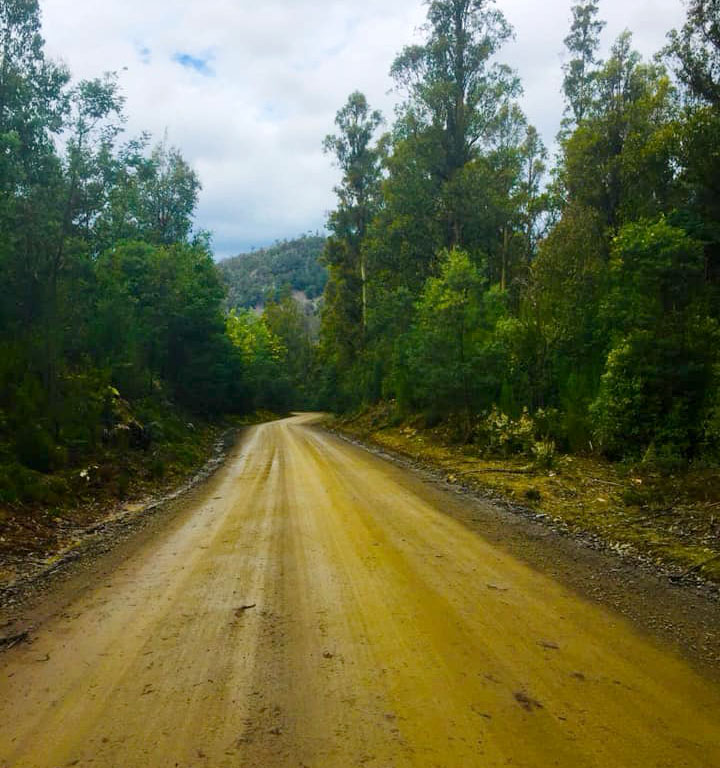
Plenty Link Road image taken 27 August 2020 illustrating the general good condition of this road
Plenty Link Road
Forestry Tasmania (FT) had by default assumed ownership of this road. However, it was built with federal taxpayer dollars and was never designated as a private forestry-only road.
For many years FT blocked the road with boom-gates and ‘keep out’ signs. These were removed several years ago and, whilst it is not well known, the road is today used by those in the know.
The drive from Lonnavale to Plenty is around 40 minutes, does not require a 4WD, and is relatively straightforward. There is of course no mobile reception.
In the Evan Rolley report of October 2018 he proposed that it be a private freight route only.
Hansard 21 November 2000
ROAD – PLENTY LINK, HUON AND DERWENT VALLEYS
Ms PUTT (Question) – My question is to the Minister for Forests. Can you confirm, in respect of the new link road between the Huon and Derwent valleys – the Plenty Link – that Forestry Tasmania has expressed a wish for this to operate as a private logging road rather than a public road? Was this road not built with Commonwealth RFA funding under the intention that it be open for public use for tourism, as well as logging traffic? Can you confirm that it was to be opened to the public in January 2001 and will this now go ahead?
Mr LENNON – I thank the member for her question. I should put on the record again, Mr Speaker, that I thank the member for her support in the construction of this road. After all, as I recall, it is the first road that she ever supported being built in state forests in Tasmania, so I would just like that recorded once again for posterity’s sake.
Mr Speaker, as the member would be aware, the Plenty Link Road links with private roads in the Derwent, which are owned by Norske Skog, previously Fletcher Challenge, and previous owners before that. So there is an issue with respect to that matter. Secondly, there are issues of safety to be considered on this. But, as the member is aware, Forestry Tasmania have a very long history in Tasmania of allowing the public access where it is safe to do so through much of their road network in Tasmania. After all, Mr Speaker, how would the member and her colleagues ever be able to get so much information about Tasmania’s forests if they were not able to travel into the forests along Forestry roads – which of course is what they do.
Ms PUTT – We often have to get around locked gates, though, mate.
Mr LENNON – More recently they have been spending a bit of time in some of the forests in the Derwent region – some of her colleagues have, at least.
Ms PUTT – Yes, where Forestry is trying to say it is not safe to drive.
Mr LENNON – So, Mr Speaker, the member is right, the road was constructed using RFA funds – that is correct. The road has all but been completed but it does link at the Derwent end with some private roads which are owned by Norske Skog, so there are issues there and there are also issues of safety.
As to when the road is to be publicly opened, I am not aware in fact that January 2001 was ever identified as a date. That may or may not be correct but I am certainly not aware of it. I am a very busy minister with many things to do, Mr Speaker, and I do not make it a habit of opening every road that is built or completed in Tasmania.
Ms PUTT – I would’ve thought you’d be there for that one, mate. I’d be very surprised if you’re not.
Mr LENNON – If the member is asking me, Mr Speaker, in a indirect sense, whether or not she would be allowed to be part of the opening ceremony, I am prepared to consider that.

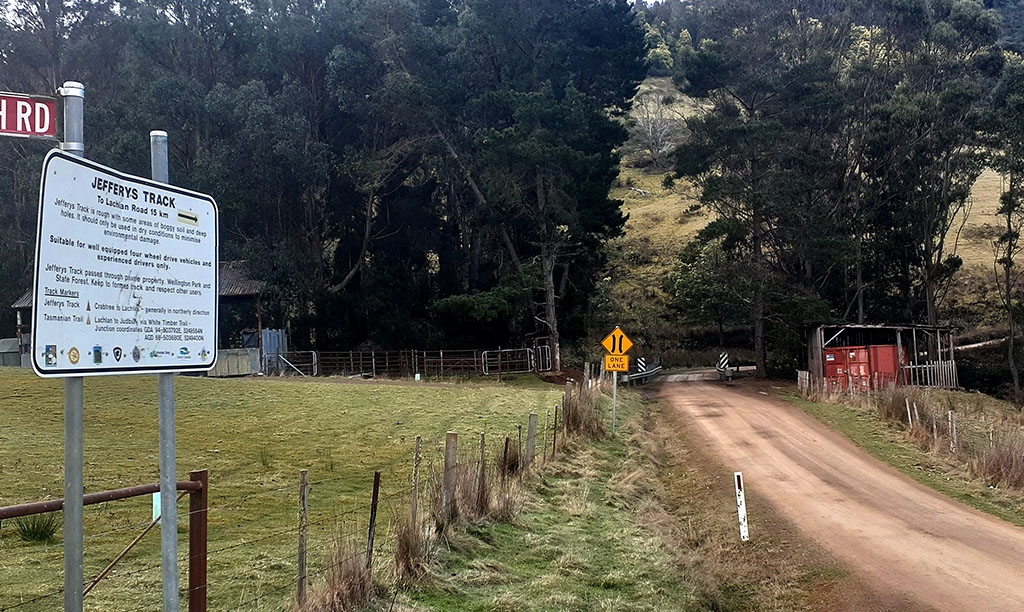
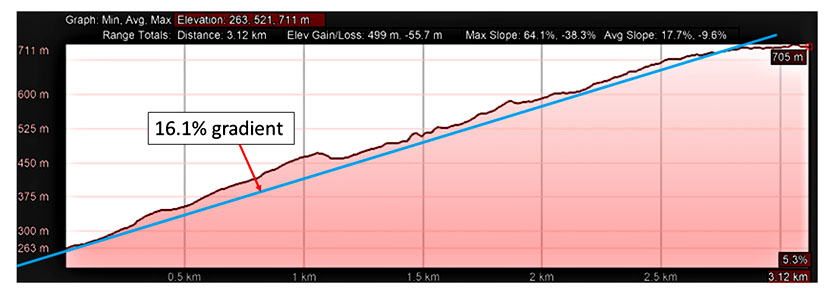




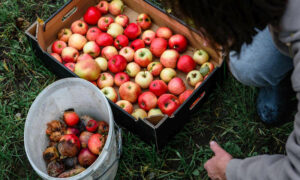




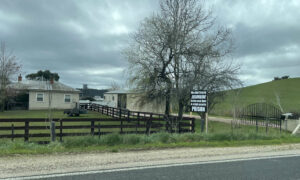





















mjf
August 30, 2020 at 11:28
Surely $147k could be better spent.
How much tourist and light traffic needs or wants to travel between Huonville and New Norfolk without traversing Hobart? I would have thought very little.
I don’t see a business case being made here, and developing a truck route via Judds Creek Rd is simply ridiculous from a cost perspective, particularly when the PLR exists 5-6 km away.
Any westerly deviation from Huonville for a new access route to the Derwent Valley will be largely seen as impractical and dead running.
Leave Jefferys Track to 4WD’ers. A romantic notion but impractical.
Geoffrey Swan
August 30, 2020 at 20:27
Martin, the $147,000 is grant money from the state which was because of the efforts of former Commissioner Taylor who got onside with local industry.
It is rumoured, but not confirmed, that the HVC did ask the state if this grant could be allocated to something else, but that was not an option. If indeed this is correct then it may suggest there is a vested interest in these link roads that extends well beyond the local councils – something I need to investigate further.
PLR is indeed the obvious option.
August 30, 2020 at 11:40
During the last few years in the Valley, the increase in both people and traffic had been quite obvious to anyone. More people are moving in, and there’s more traffic on the roads plus more trucks from increased industry etc.This is very noticeable to most observers.
As with the original road from Hobart in the 1890s, and a new freeway in the 1980s, new roads tend to follow population and traffic increases.
It’s basic common sense really. It’s certainly responsible of the government to increase infrastructure to meet the needs of increased population – otherwise the roads just get more congested and need more repairs.
It’s the responsibility of the council to facilitate full consultation …
Geoffrey Swan
August 30, 2020 at 20:21
The councils are not facilitating the consultation, John. They are simply handing over $147,000 to two consultants to investigate the feasibility. They in turn are seeking engagement in order to provide a report, but as you will have read, this engagement began with only 5 residents.
It is to the credit of the local community which has since stepped up so that people are actually informed. The concern is that the HVC in this case has many ‘reports’ on its shelves – just gathering dust at the taxpayer or ratepayers’ expense.
mjf
August 31, 2020 at 10:14
From a desktop perspective, Liddells Rd looks like a possibity, thereby avoiding Mitchells Rd. Has GHD evaluated that route?
Interestingly, PLR has two known WTE nests in relatively close proximity to its alignment, and certainly within line-of-sight, which would create timing issues for any reconstruction activities.
Jefferys Track has one known nest further away than the PLR situation, but would still need managing re timing of roading activities. JT may well be the lesser of two evils on that front.
Geoffrey Swan
August 31, 2020 at 14:15
I am advised that some residents of Liddells Road have lived there for at least thirty years with some having been born there, and so any such consideration of this proposal would in turn destroy the lives of these families also. Given the size of the feasibility budget, it would surprise me if GHD has not already considered this option.
I am not sure of your comments regards WTE activity impacting PLR as this road is well established and fit for purpose already – apart from conforming to AustRoad standards.
mjf
September 1, 2020 at 10:37
I realise that this is at a slight tangent Geoffrey, but the Wedge Tailed Eagle issue is a vexing question.
Industry has to observe strict protocols regarding nesting season disturbance (including restrictions on cartage, new road construction and maintenance on certain routes) but the public has open slather for movement past any nests unless forestry roads are gated.
Pat Synge
August 31, 2020 at 15:07
Thank you for putting this together, Geoffrey.
I look forward to hearing from the consultants on Thursday.
I suggest you add a map that includes Huonville to help those less familiar with the area so that we can compare relative distances.